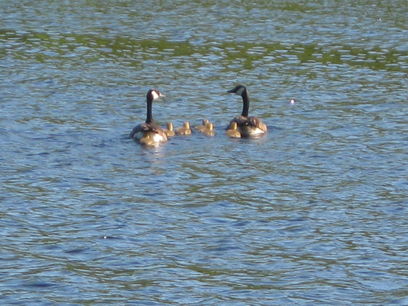 by
Lynn and
John Salmon
by
Lynn and
John Salmon We joined our good friend Peter Fullagar for a couple of days and participated in the Delaware Bay Shorebird Project at Reed's Beach on Cape May, NJ. See Peter's blog for more details. The project is led by Larry Niles and Amanda Dey (husband and wife) from New Jersey and includes a mix of scientists, avid birders, students, volunteers and curious locals. There we met Clive Minton, one of the inventors of the cannon netting process that is used to catch the birds. In an interesting, it's a small world moment, we met Clive's co-inventor of the netting, Nick Branson, a couple of months later on Easter Island when we went to see a total eclipse of the sun.


The catch process involves setting up and camouflaging netting along the beach and then patiently watching the birds from a distance using spotting scopes. One goal of this year's project is recapturing birds that were tagged with small data loggers the year before and retrieving the data. The data logger can be seen on the banded "YOU" bird in the top photo.
On the first catch attempt I'm involved with, we set up the cannon netting and watched birds for 7 hours without a catch. The main problem was that the Red Knots were too tightly packed to keep track of any birds spotted with loggers that were wandering in and out of the throng. No one wanted to be trigger happy after accidentally recapturing bird "YOU" twice on a previous day.
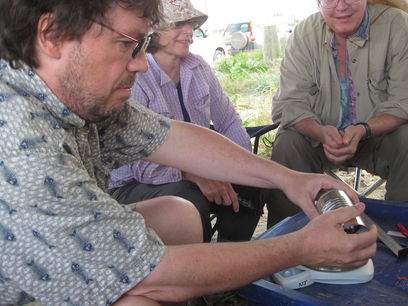

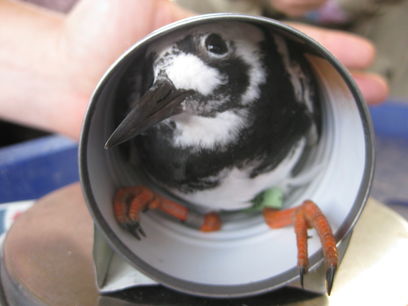
John and I assist after a successful catch on the second day. The catch: 12 Red Knot, 25 Ruddy Turnstone and 1 retrap = total 37. We process shorebirds which involves measuring, weighing, banding, and recording data before the birds are released.
The yearly monitoring continues - see more infor in this NY Times article from June, 2012

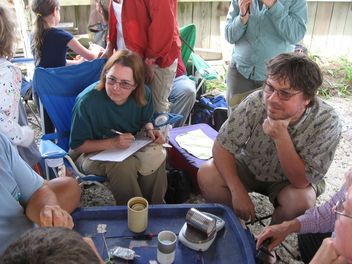

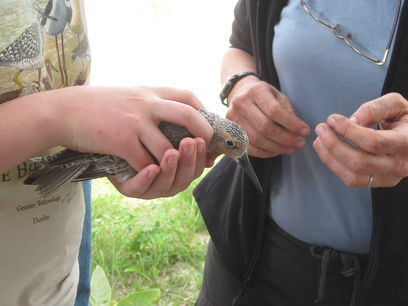

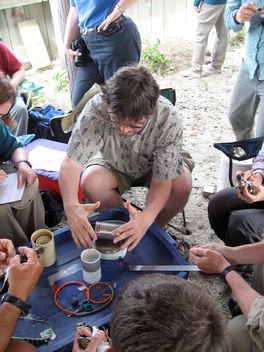
We saw other birds (laughing gulls, herring gulls, sanderlings) and many horseshoe crabs along the beach. There was also an interesting sign in town identifying the Mosquito Department.

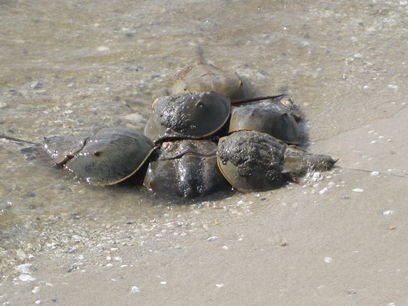
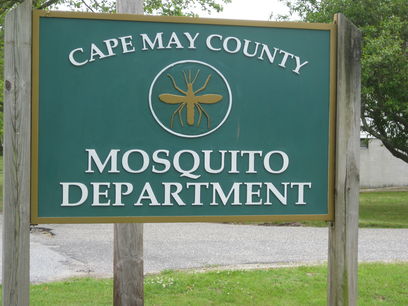
While geocaching on the drive down I saw a family of Canada geese.

